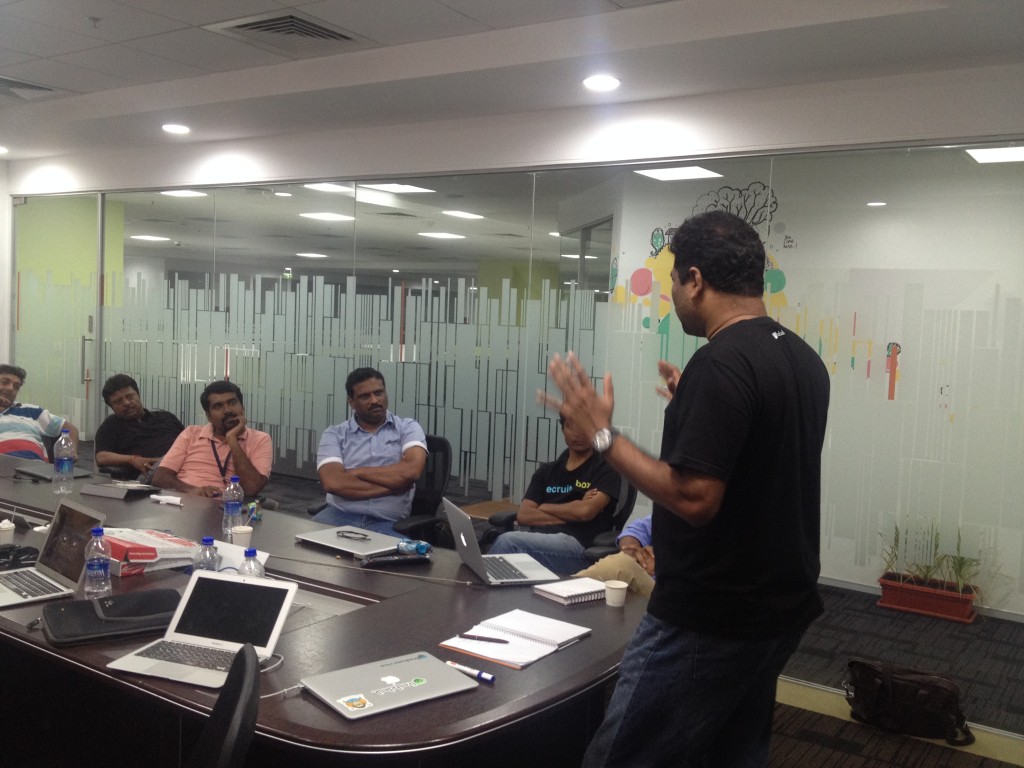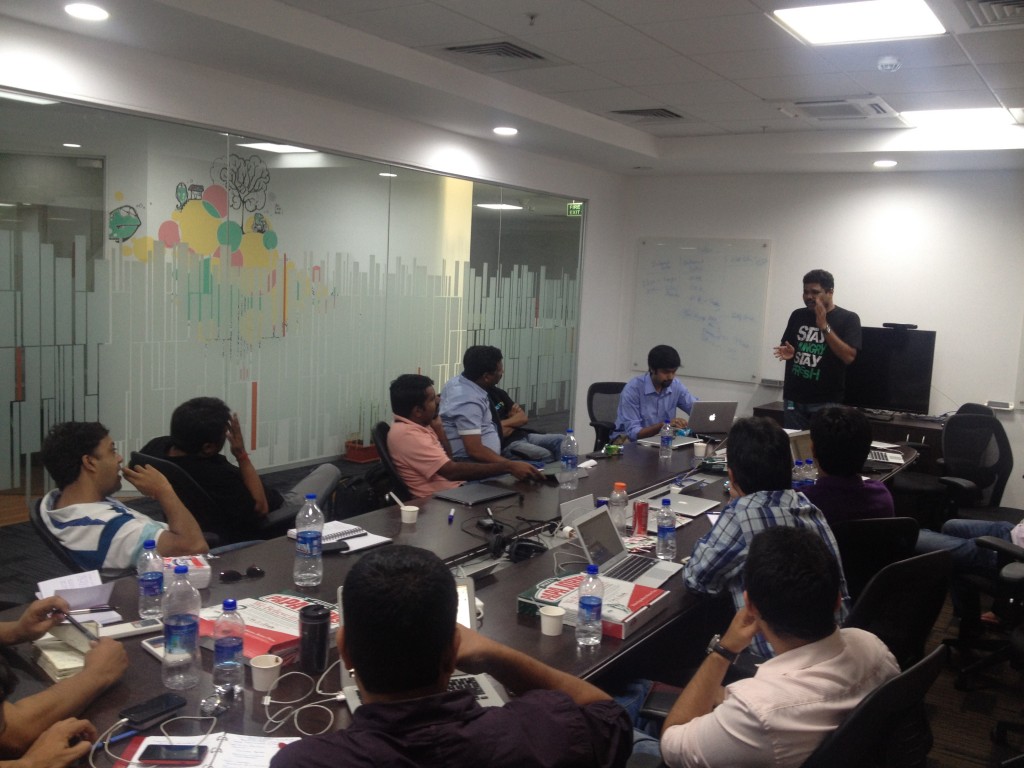Entrepreneurs from Bangalore had no problem driving into Chennai amid a tense political situation in Tamil Nadu. There was an air of expectation and enthusiasm on the part of more than 15 entrepreneurs who had come in from Bangalore and Mumbai, apart from Chennai itself, to listen to Girish Mathrubootham, Freshdesk CEO and founder, for the Playbook Roundtable on Scaling a SaaS business. Colourful wall graffiti greeted visitors at the Freshdesk’s vibrant office, which itself exuded energy.
A condensed version of the discussion is given in form of a Q&A.

What should I focus on in a SaaS business?
The No. 1 success for your business is your product and it is key to your sustenance in business. You should know what matters to your business. Innovate on the product but don’t change your business model. Look at businesses that are in the same domain as you are or businesses that sell to the same kind of customers like yours. Adopt their business model. Copying business models is not a sin. Tweaking the business model may not be good in the long run. 37Signals started charging credit card subscription only when the merchant bank refused them monthly subscriptions as the bank felt the business is new and could fold up in any time. Such business model changes happen by compulsion and not by design.
How should I go about marketing the SaaS business?
Forget affiliate marketing. It works only for impulse buys and in an e-commerce environment. Success, if any, is not scalable. Only Constant Contact has achieved success with affiliate marketing.
Guest blogs with linkbacks to your product site is a good idea.
Positioning and lead generation are key to marketing. Trigger e-mails is just a drip marketing tool and not scalable. Killing welcome e-mails increases response rates. Getting your e-mail to land in the target’s inbox is crucial and it shouldn’t get into Promotion box in Gmail.
Text-only e-mail with no images and links works best. Attention-grabbing subject line and shortening the length to four to five lines assure greater response rates. Remember, mails are read on mobiles. So keep it short.
Instead of a uniform pitch to customers, talk to them to understand their problems. Then your demo should provide a solution to their problems. Customers at times get confused if you run through your presentation and may not connect with how the product or the features will solve their problems. Be specific.
Make your demo educational for the customer. Say something new and which the customer doesn’t know. It will earn you respect and might convert to sales.
Freemium has two groups. In one, after a trial period, you charge for the product right from the beginning. In the other, there are a free version and a paid version of the product. Nail down which works best for your business. Any number of free trials is not going to hurt your business. Leaving money on the table is a good idea. Because the customer might buy after a long time. Patience is a good trait.
Track the customer from their first visit to your website and determine the pattern of how customers find you. This is called visitor fingerprinting. Then you know where to focus upon.
Trade shows. Do they help? For small companies, they may bring some branding and don’t expect too much ROI from events. What works best is a personalized presentation to your target customer. Do your homework and create customized presentations. This might convert to sales.
 Generally, personalize across presales, sales, and marketing. The response rates are 25%.
Generally, personalize across presales, sales, and marketing. The response rates are 25%.
[Read Marc Benioff’s Behind the Cloud.]
[Watch Gail Goodman of Customer Contact’s video “How to negotiate a long slow SaaS ramp of death”]
Webinars? Webinars are good. All the more good if there is an expert on the topic speaking and it offers something new. Make the webinar having some educational value for the audience.
PR – Be in the news constantly. Hire a good PR agency and avoid scamsters promising hell a lot of things (say, one-page content on you in a magazine that has access to thousands of targets in a domain). They wouldn’t be suitable for your business. Churn out good stories often. Reach the people who don’t need you now. Seed them for the future.
Segregate your marketing function into a campaign team and a content marketing/product marketing team.

